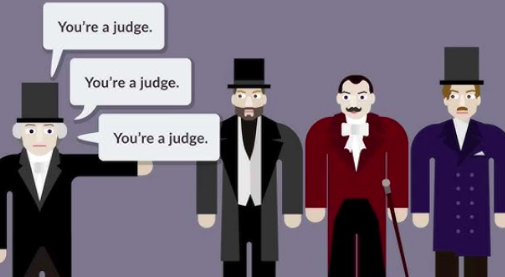Supreme Court Cases to Know for APUSH
1/19
Earn XP
Description and Tags
**the impact of the cases, not the context
Name | Mastery | Learn | Test | Matching | Spaced |
|---|
No study sessions yet.
20 Terms

Marbury v. Madison (1803)
SCOTUS has the power to overrule the legislative/executive branches, based off of constitutionality (this is judicial review)
The ruling also opposed the Kentucky and Virginia Resolutions where states could nullify “unconstitutional” federal laws
photo cred
McCulloch v. Maryland (1819)
Constitution didn’t mention a National Bank, but it gave the federal government the power to establish one (this was a loose interpretation of the Constitution: implied powers); increased authority of federal government
This ruling reaffirmed that federal laws > state laws
Gibbons v. Ogden (1824)
Federal government has control over interstate commerce
Another instance that reaffirmed how federal power > state power
Dred Scott v. Sanford (1857)
Black people/descendants not U.S. citizens → cannot sue in federal courts
Temporary time lived in free territory did not make one free
Missouri Compromise declared unconstitutional (deprived people of their property with due process of law)
Plessy v. Ferguson (1896)
Segregation constitutional as long as it was “separate, but equal” (legally sanctioned segregation in the South)
Separate facilities were never actually equal
Brown v. Board of Education (1954)
Racially integrated public schools (overturned Plessy v. Ferguson for public schools only)
Schneck v. United States (1919)
Federal government can restrict speech if danger is believed to ensue from it
Involved the Espionage Act of 1917 (it’s illegal to interfere with military operations in times of war)
Korematsu v. United States (1942)
Upheld the constitutionality of the internment of Japanese-Americans, justified by the fear from the attack on Pearl Harbor as a means of preserving national security
Backed by FDR’s Executive Order 9066 that mandated the internment of Japanese-Americans from west coast military zones
Gideon v. Wainright (1963)
Sixth amendment right to counsel applies to state criminal trials
Get legal representation whether you pay or not
Mapp v. Ohio (1961)
Exclusionary rule (prohibits use of evidence obtained in violation of the 14th amendment in federal court) now applies to state courts
Miranda v. Arizona (1966)
Law enforcement must tell suspects they have a right to remain silent, they have the right to an attorney, and that anything they say can be used against them in court (Miranda War
Tinker v. Des Moines (1969)
Students have freedom of speech in schools—clothing is a form of freedom of speech (in the context of the Vietnam War)
Worcester v. Georgia (1832)
Only the federal government (note states) can regulate relations with Native American tribes
Wabash v. Illinois (1886)
Federal government can regulate interstate railroad rates by creating the Interstate Commerce Commission (ICC)
Roe v. Wade (1973)
Choice for abortion protected as a right to privacy; banned extreme limits that place unnecessary difficult to get abortion
NY Times v. United States (1971)
Limited government’s ability/reasons to keep the press from printing information
**Pentagon Papers
**Daniel Ellsberg
University of California Regents v. Bakke (1978)
No affirmative action plans based on quotas (race allowed to be considered with admissions)
United States v. Nixon (1974)
Executive privilege doesnt apply in a criminal case
Watergate Scandal where Nixon needed to have sent in unedited tapes; he obstructed justice, according to SCOTUS’
Griswold v. Connecticut (1965)
Right to privacy present in the first/fourteenth amendments (due process clause)
Dartmouth College v. Woodward (1819)
Decision upheld sanctity of contracts and of private property
Assured economic development; encouraged investment in new corporations
Set a SCOTUS precedent to overturn acts of state legislatures